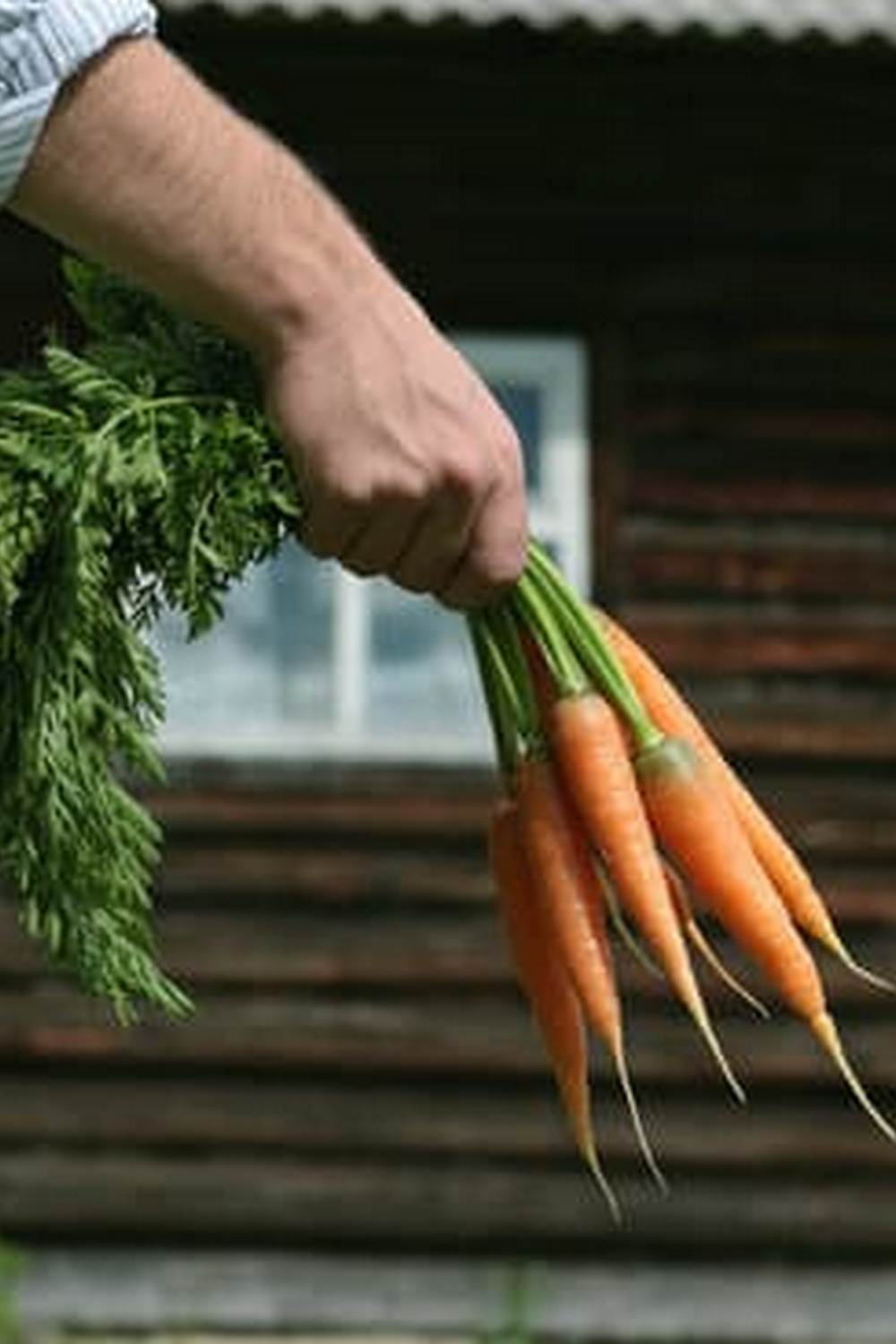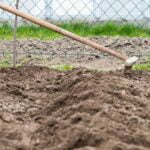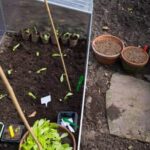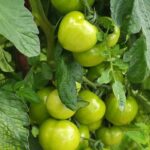Are you interested in starting your own vegetable garden but feeling overwhelmed by where to begin? Look no further, as this article on “Vegetable Gardening 101 for Dummies” is here to guide you through the basics of starting your very own vegetable garden. Whether you have a large backyard or just a small balcony, this comprehensive guide will help you kickstart your vegetable gardening journey with ease.
When it comes to vegetable gardening 101 for dummies, it’s important to start with the basics. From selecting the right vegetables for your garden to understanding soil and compost essentials, this article will cover everything you need to know as a beginner. By learning proper planting techniques and essential care tips like watering and fertilizing, you can ensure healthy plants that yield delicious produce.
As you embark on this new adventure in vegetable gardening, planning and designing your garden layout will be crucial for success. With step-by-step instructions on planting seeds and seedlings, along with strategies for dealing with common pests and diseases, you’ll be equipped with the knowledge to maintain a thriving garden. So roll up your sleeves, get your hands dirty, and let’s dive into the world of vegetable gardening together.
Selecting the Right Vegetables for Your Garden
When it comes to starting your vegetable gardening journey, one of the crucial steps is selecting the right vegetables for your garden. As a novice in the world of vegetable gardening, it’s important to choose plants that are well-suited for your climate, space, and level of experience. Here is a guide to help you navigate through the process of selecting the right vegetables for your garden:
- Consider Your Climate: Before selecting vegetables to plant in your garden, it’s essential to research which crops thrive in your specific climate zone. Some vegetables prefer cooler temperatures, while others require warmer conditions to grow successfully.
- Assess Your Space: Take into account the amount of space you have available for gardening. If you have limited space, consider planting compact varieties or utilizing vertical gardening techniques to maximize yield.
- Start with Easy-to-Grow Vegetables: As a beginner in vegetable gardening, opt for vegetables that are known to be low-maintenance and forgiving. Vegetables like tomatoes, zucchini, radishes, and lettuce are great options for novice gardeners.
Additionally, some vegetables are more resilient against common pests and diseases, making them ideal choices for beginners. When selecting vegetables for your garden, prioritize those that will provide you with a successful and enjoyable gardening experience as you learn the ropes of vegetable gardening 101 for dummies.
Remember that experimentation is key when it comes to finding the right vegetables for your garden. Don’t be afraid to try growing different crops each season and learn from both successes and failures along the way. With time and practice, you’ll develop a better understanding of which vegetables thrive in your specific growing conditions and contribute to a bountiful harvest year after year.
Understanding Soil and Compost
When it comes to vegetable gardening 101 for dummies, understanding soil and compost is crucial for the success of your garden. The quality of your soil directly impacts the health and growth of your plants. Here are some key points to keep in mind when it comes to soil and compost:
- Test your soil: Before you start planting, it’s important to know the pH level and nutrient content of your soil. You can do this by using a DIY test kit or sending a sample to a local cooperative extension office.
- Improve soil structure: Adding organic matter like compost, aged manure, or shredded leaves can help improve the texture and fertility of your soil. This ensures better drainage, aeration, and nutrient retention for your plants.
- Rotate crops: To prevent depletion of specific nutrients in the soil and reduce pest and disease problems, practice crop rotation by moving plants around in different areas of your garden each season.
When it comes to composting, think of it as nature’s way of recycling organic matter back into the soil. Here are some tips on how to create quality compost for your vegetable garden:
- Use a mix of brown (carbon-rich) and green (nitrogen-rich) materials like grass clippings, leaves, kitchen scraps, and coffee grounds to create a balanced compost pile.
- Add water: Keep your compost pile moist but not soggy. Turning the pile regularly will help aerate it and speed up decomposition.
- Wait patiently: Composting takes time – anywhere from a few months to a year depending on factors like temperature and moisture levels. Once the materials have broken down into a dark, crumbly substance with an earthy smell, your compost is ready to use in the garden.
By understanding the importance of soil health and utilizing compost effectively in your vegetable garden, you’ll be well on your way to growing healthy and productive plants. Remember that healthy soil leads to healthy plants which ultimately leads to bountiful harvests for you to enjoy.
Planning and Designing Your Garden
Choosing the Right Location
When it comes to planning and designing your vegetable garden, one of the first considerations is choosing the right location. Select an area that receives ample sunlight, ideally 6-8 hours per day, for most vegetables to thrive. Ensure that the site has good drainage to prevent waterlogging, as excess moisture can lead to root rot and other issues. Additionally, consider proximity to a water source for easy irrigation.
Layout and Design
Another important aspect of planning your vegetable garden is determining the layout and design. Consider factors such as spacing between plants to allow for proper growth and airflow. Raised beds are a popular option for beginners as they provide better control over soil quality and drainage. You can also incorporate paths or walkways for easy access and maintenance. Take into account any existing structures or obstacles in your chosen location when designing your garden layout.
Companion Planting
Consider incorporating companion planting principles into your garden design, where certain plants are grown together to benefit each other in various ways. For example, planting marigolds alongside tomatoes can help deter pests, while growing beans near corn can provide mutual support. Research different companion planting combinations to maximize plant health and yield in your vegetable gardening endeavors. With proper planning and thoughtful design, you can set yourself up for a successful season of vegetable gardening with these tips for beginners.
Planting Techniques
Starting From Seeds
When starting your vegetable garden, one of the most economical ways is to begin by planting seeds. To ensure successful seed germination, it is important to follow the directions on the seed packet. Some seeds require soaking overnight before planting, while others can be directly sown into the soil. Make sure to plant seeds at the appropriate depth and spacing as indicated on the packet. Water the seeds gently after planting and keep the soil consistently moist until germination occurs.
Transplanting Seedlings
If you prefer, you can also start your vegetable garden by purchasing seedlings from a nursery or garden center. When transplanting seedlings into your garden, it is crucial to handle them gently to avoid damaging their delicate roots. Dig a hole that is slightly larger than the root ball of the seedling and carefully place it in the hole. Gently pack soil around the base of the seedling and water thoroughly to help ease its transition into its new environment.
Caring for Young Plants
Whether you started from seeds or transplanted seedlings, it is important to provide proper care for young plants to ensure they thrive in your vegetable garden. Keep an eye on moisture levels in the soil, ensuring it remains consistently moist but not waterlogged.
As plants grow, consider adding mulch around them to retain moisture, suppress weeds, and regulate soil temperature. Additionally, monitor your plants for signs of stress or nutrient deficiencies and address any issues promptly to support their growth and development.
By following these step-by-step instructions for planting seeds and seedlings in your vegetable garden, even beginners can create a successful and bountiful harvest. Remember that patience and attention to detail are key when establishing your garden, so take time to observe your plants and make adjustments as needed along the way. With practice and experience, you will gain confidence in your vegetable gardening skills and enjoy a rewarding hobby that provides fresh produce throughout the growing season.
Watering and Fertilizing
When it comes to watering your vegetable garden, it’s important to find the right balance. Over-watering can lead to root rot and other issues, while under-watering can result in stunted growth and poor fruit development. The key is to water consistently and deeply, making sure that the soil is moist but not waterlogged.
In addition to proper watering, fertilizing your vegetable garden is crucial for supplying essential nutrients to your plants. Different vegetables have different nutrient requirements, so it’s important to choose the right type of fertilizer for each crop. Organic options like compost and manure are great choices for providing a slow release of nutrients over time. Remember to follow the instructions on the fertilizer packaging and avoid over-fertilizing, as this can harm your plants rather than help them.
| Watering Tips | Fertilizing Tips |
|---|---|
| Water consistently and deeply | Choose the right type of fertilizer for each crop |
| Avoid over-watering which can cause root rot | Use organic options like compost or manure |
| Check soil moisture before watering, Follow instructions on fertilizer packaging carefully, |
Dealing With Common Pests and Diseases in Your Vegetable Garden
One important step in dealing with pests and diseases is to regularly inspect your plants for any signs of trouble. Look out for wilting, yellowing leaves, holes in the foliage, or any unusual growths. By catching these issues early on, you can take action before they escalate and cause significant damage to your garden.
In addition to visual inspections, it’s also beneficial to practice good garden hygiene. Remove any dead or diseased plant material promptly to prevent the spread of diseases. Keep your garden clean and tidy, as weeds and debris can attract pests. Consider rotating your crops each year to help prevent the buildup of soil-borne diseases in the same spot.
| Common Pests | Preventive Measures |
|---|---|
| Aphids | Use insecticidal soap or neem oil spray |
| Caterpillars | Handpick caterpillars off plants or use Bacillus thuringiensis (Bt) spray |
| Powdery Mildew | Avoid overhead watering and provide good air circulation around plants |
Harvesting and Enjoying the Fruits of Your Labor
Growing your own vegetables is a rewarding experience that culminates in the satisfying moment of harvesting and enjoying the fruits of your labor. To maximize the yield and flavor of your homegrown produce, there are several key practices to keep in mind.
When it comes to harvesting, it’s essential to pick vegetables at the right time to ensure optimal taste and texture. Different vegetables have different indicators for ripeness, such as color, size, or firmness. For example, tomatoes should be harvested when they are fully colored and slightly soft to the touch, while cucumbers are best picked when they’re still small and tender. By paying attention to these cues, you can enjoy your veggies at their peak freshness.
Proper storage is another crucial aspect of maximizing the flavor and longevity of your harvest. Many vegetables benefit from being stored in a cool, dark place with good air circulation to prevent spoilage. Some root vegetables like carrots and beets can be stored in a cellar or refrigerator crisper drawer, while others like onions and garlic prefer a dry, well-ventilated area.
By storing your produce correctly, you can extend its shelf life and continue enjoying your homegrown vegetables for weeks to come. Remember that the ultimate goal of vegetable gardening 101 for dummies is not only growing but also savoring the delicious flavors of fresh produce straight from your garden.
Tips for Extending Your Growing Season
One of the keys to successful vegetable gardening is extending your growing season from spring through fall. By doing so, you can enjoy a bountiful harvest for a longer period of time and maximize the benefits of your hard work. There are several methods that can help you achieve this goal, even if you live in a region with a shorter growing season.
One effective way to extend your growing season is by using cold frames or row covers. These simple structures act as mini greenhouses, trapping heat and protecting your plants from frost. Cold frames can be used to start seeds earlier in the season, while row covers can provide protection during colder nights in the fall. By using these tools strategically, you can give your plants the extra warmth they need to thrive beyond their typical growing window.
Another technique for extending your growing season is by planting cold-hardy vegetables that can withstand cooler temperatures. Vegetables like kale, spinach, carrots, and radishes are resilient to frost and can continue to grow even as the weather cools down. By choosing these types of crops for your garden, you can ensure a continuous harvest well into the fall months.
Additionally, utilizing mulch and proper soil preparation can help regulate soil temperature and protect plants from sudden temperature drops, further extending your growing season. By incorporating these strategies into your vegetable gardening routine, you can enjoy fresh produce for an extended period of time throughout the year.
Additional Resources and Tools for Continued Learning and Success in Vegetable Gardening
As you continue your journey in vegetable gardening, there are countless resources and tools available to help you expand your knowledge and achieve success in cultivating your own vibrant garden. Whether you are looking for online guides, gardening books, or local classes, there is a wealth of information at your fingertips to deepen your understanding and improve your skills in vegetable gardening 101 for dummies.
One valuable resource for continued learning is joining a community garden or online gardening forum where you can connect with experienced gardeners, exchange tips, and troubleshoot any challenges you may encounter. These platforms provide a supportive environment for beginners to learn from seasoned veterans and share their own experiences with like-minded individuals passionate about vegetable gardening.
In addition to seeking out resources, investing in the right tools can make a significant difference in the success of your vegetable garden. From quality hand tools like trowels and pruners to essential equipment such as drip irrigation systems and row covers, having the proper gear can streamline tasks and improve efficiency in tending to your plants.
By utilizing these resources and tools effectively, you can continue to grow as a gardener while reaping the rewards of bountiful harvests from your thriving vegetable garden.
Frequently Asked Questions
What Is the Easiest Vegetable Garden for Beginners?
The easiest vegetable garden for beginners typically includes plants like tomatoes, lettuce, radishes, and green beans. These vegetables are relatively low-maintenance and can thrive in various growing conditions, making them ideal for those new to gardening.
How Do You Grow a Vegetable Garden for Dummies?
Growing a vegetable garden for dummies involves selecting a sunny location, preparing the soil by adding compost or fertilizer, choosing easy-to-grow vegetables like tomatoes and peppers, watering consistently, and keeping an eye out for common pests and diseases. Following these basic steps can help even the most inexperienced gardener succeed.
What Vegetables Are Easiest to Grow for Beginners?
Some of the easiest vegetables to grow for beginners include radishes, lettuce, cucumbers, zucchini, and carrots. These plants are generally resilient, require minimal care, and can be grown in containers or small garden plots. Starting with these simple options can help build confidence for aspiring gardeners.

If you’re looking to get into vegetable gardening, or are just looking for some tips on how to make your current garden better, then you’ve come to the right place! My name is Ethel and I have been gardening for years. In this blog, I’m going to share with you some of my best tips on how to create a successful vegetable garden.





